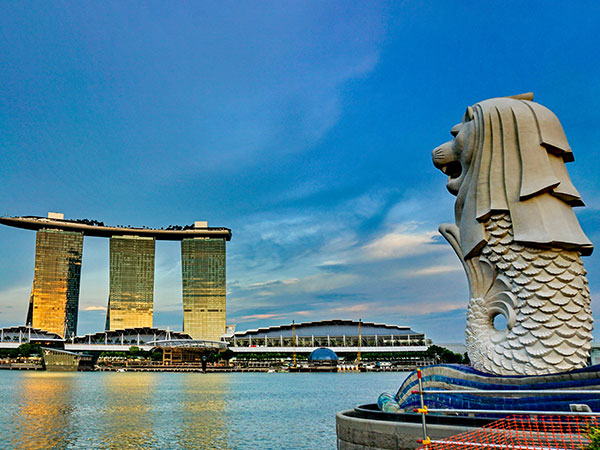



The Philippines is an island nation in Southeast Asia, made up of over 7,000 islands and islets. The Philippines is attractive for its stunning natural beauty, abundant beaches, diverse marine life, rich culture, and affordability. It’s also a popular destination for those seeking adventure, relaxation, and cultural experiences.
The Philippines can be a good place to both work and settle, offering a mix of attractive features for expats. However, it’s important to consider both the benefits and potential challenges before making a decision.
Philippines generally offers a relatively safe environment for settling, especially outside of major urban centers and certain areas known for unrest.
Permanent residency in the Philippines grants a foreign national the legal right to live and work in the country indefinitely, similar to a “green card” in other countries. It’s a status that allows long-term stay and access to certain rights and privileges, but falls short of full citizenship.
A Permanent Resident Visa, often referred to as a PR visa or Green Card in the US, grants individuals the right to live and work in a country permanently, although they are not citizens. It’s a legal status that allows for indefinite residence, distinct from temporary visas or citizenship.
The Philippines offers various long-stay visa options for foreign nationals, including work, student, spouse, and retirement visas. These visas allow for longer stays in the country, potentially leading to permanent residency in some cases. Depending on your specific situation and purpose for staying, you’ll need to apply for the appropriate visa through the Philippine Embassy or Consulate in your country of origin.
Here’s a more detailed breakdown of some common long-stay visa types:
1. Work Visa (9(g)): This visa is for foreign nationals who have secured employment with a Filipino company.
2. Student Visa (9(f)): This visa is for individuals who are pursuing studies at a recognized educational institution in the Philippines.
3. Spouse Visa (13(a)): This visa is for spouses of Filipino citizens and/or their dependent children and may lead to permanent residency.
4. Retirement Visa (Special Resident Retiree’s Visa – SRRV): This visa is for foreign nationals who meet the financial requirements and want to retire in the Philippines.
the Philippines, dual citizenship refers to the status of holding citizenship in both the Philippines and another country. It’s primarily regulated by Republic Act No. 9225, the Citizenship Retention and Re-acquisition Act of 2003. This law allows natural-born Filipinos who have become naturalized citizens of another country to retain or re-acquire their Filipino citizenship. This means they can enjoy full civil, economic, and political rights as Filipinos again, including the right to own property, travel with a Philippine passport, and engage in business.
work in the Philippines can be good, offering a combination of attractive benefits and a thriving job market. The country is known for its strong work ethic, diverse industries, and a growing economy, making it an appealing destination for both Filipino and foreign workers.
The major industries in the Philippines are
1. Agribusiness: The Philippines has a strong agricultural base, with key products including rice, corn, coconut, and sugar.
2. Manufacturing: This sector includes diverse sub-sectors like food and beverage, wearing apparel, footwear, tobacco, and chemicals. The Philippines is also a major producer of semiconductors and electronic products.
3. Real Estate: The real estate industry is a significant contributor to the Philippine economy.
4. E-commerce: Online sales and e-commerce are growing rapidly.
5. Construction: The construction industry is a major source of jobs and contributes to infrastructure development.
6. Tourism: The Philippines has a vibrant tourism industry, with attractions like beaches, islands, and historical sites.
Major industries in Philippines
1. Software developers
2. Data analysts
3. Customer service representatives
4. IT support specialists
5. Non-voice agents
6. Virtual assistants
7. Marketing associates
8. HR assistants
9. Accountants
10. Management trainees
11. Engineers
A Philippine work visa allows foreign nationals to legally work in the Philippines. The most common type is the 9(g) Pre-Arranged Employment Visa, which requires the foreign worker to be employed by a Philippine-based company. Besides the visa, foreign workers also need an Alien Employment Permit (AEP) from the Department of Labor and Employment (DOLE), which confirms that the position cannot be filled by a Filipino worker.
There are three main types of Work Permits that the Philippines government issues:
Your employer has to submit the application for your work permit at the Department of Labor and Employment (DOLE) in the Philippines. They must do this before you start working in their company.
It takes about 2-3 weeks for the DOLE to process an application for a Philippines Work Permit.
1. Valid Passport
2. Completed Visa Application Form
3. Passport-Sized Photos
4. Employment Contract
5. Alien Employment Permit (AEP)
6. Proof of Financial Capacity
Coraledu is best positioned to help you with your Philippines visit visa. Our teams will help you:
Talk to us to get your Philippines visitor visa process underway
can help – fill in your details and we’ll call you back.



